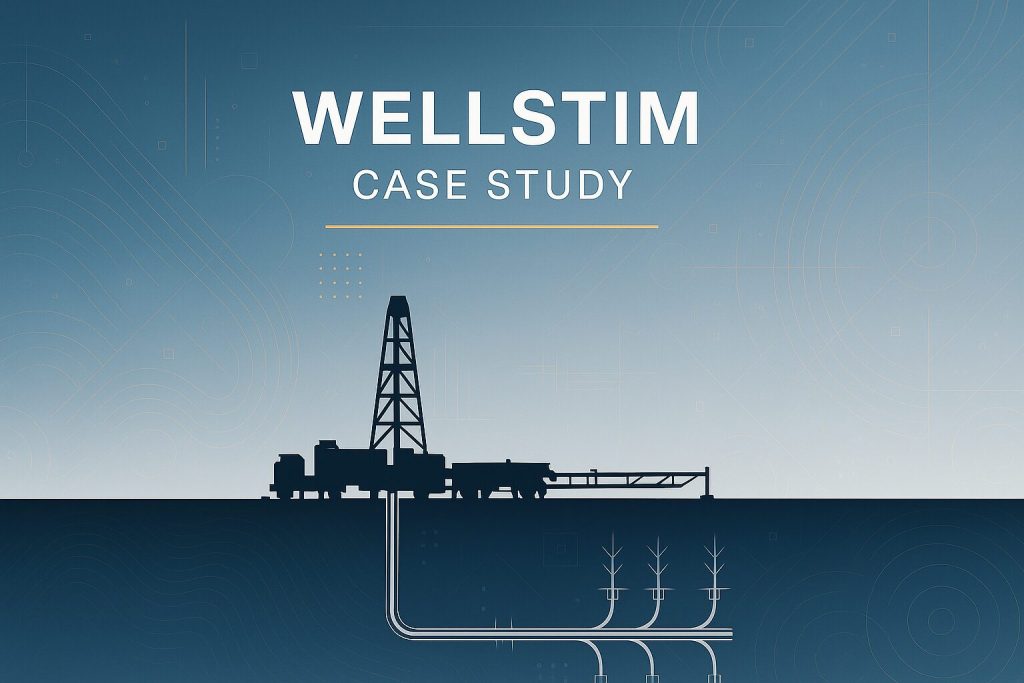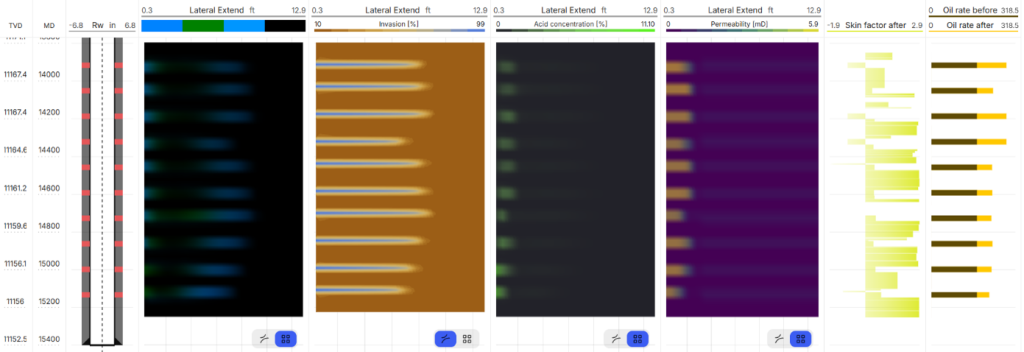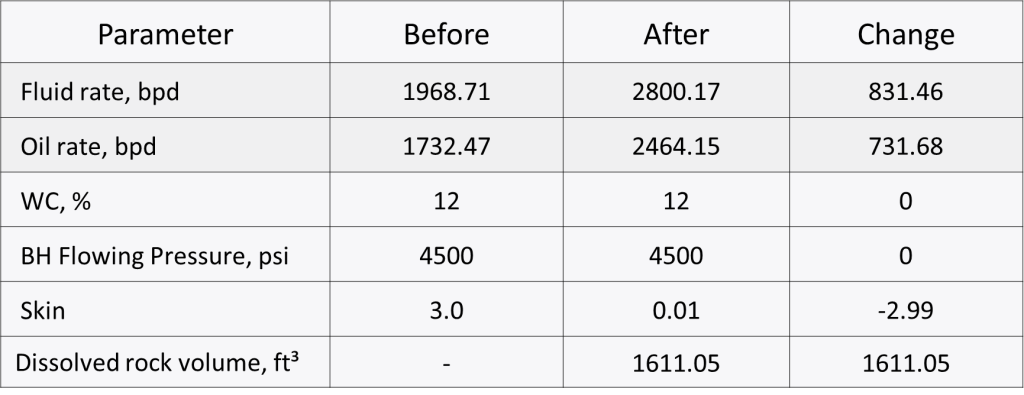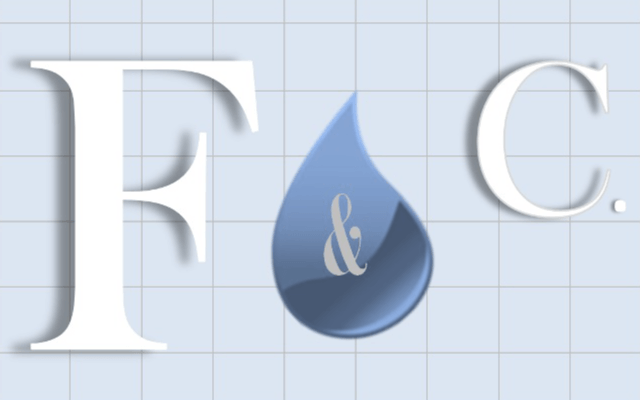Trajectory design and post-drilling inflow performance analysis for a radial drilling operation with skin factor assessment.
The challenge
The radial drilling completion was designed to enhance inflow performance and reduce the high skin values previously identified in the producing interval.
- Area: Central Asia – Reservoir: Oil sandstone – Depth: MD – 19,482.61 ft, TVDSS – 18,819.52 ft – Initial Skin: +2.83 – Objective: Improve inflow performance and evaluate skin reduction through radial channel drilling

3D visualization of radial channel trajectories
The solution
A retrospective analysis of the well’s production regime determined the initial skin factor as +2.83. Using WellStim, a model of the main wellbore and three radial channels was created to simulate the geometry and hydraulic behavior of the stimulation system.

Lithological structure and main well trajectory
Parameters of Radial Channel Trajectories
| Parameter | Channel 1 | Channel 2 | Channel 3 |
|---|---|---|---|
| Measured depth of exit point (ft) | 5741.47 | 5741.47 | 5721.78 |
| Borehole length (ft) | 45.93 | 45.93 | 45.93 |
| Exit angle from borehole (zenith, °) | 0.07 | 0.07 | 0.05 |
| Exit angle from borehole (azimuth, °) | 52.60 | 52.60 | 196.44 |
| Angle build-up (zenith, °) | 88.20 | 88.10 | 88.12 |
| Angle build-up (azimuth, °) | 0.00 | 120.00 | -120.00 |
| Channel diameter (ft) | 0.23 | 0.23 | 0.23 |

3D visualization of designed radial channels
The main wellbore trajectory and reservoir petrophysical model served as inputs for the simulation of radial trajectories and subsequent inflow performance evaluation.

Well operating regime before radial perforation
The results
Following the drilling and completion of three radial channels, inflow performance improved substantially. The skin factor decreased from +2.83 to -3.11, confirming efficient removal of near-wellbore damage and improved reservoir connectivity.
| Parameter | Before Radial Perforation | After Radial Perforation |
|---|---|---|
| Fluid rate (bpd) | 94.35 | 214.04 |
| Oil rate (bpd) | 13.21 | 29.97 |
| Skin | +2.83 | -3.11 |

Production analysis – actual vs calculated
Key achievements:
- 127% increase in fluid production rate
- 127% increase in oil production rate
- Complete skin removal and negative skin achieved (from +2.83 to -3.11)
- Three radial channels successfully drilled and completed
- Improved reservoir connectivity and near-wellbore flow conditions
Summary
This case demonstrates WellStim’s capability to:
- Design and simulate radial drilling trajectories with precision
- Model inflow and skin performance before and after completion
- Quantitatively evaluate productivity improvements achieved by radial stimulation
The radial drilling operation led to substantial production gains while effectively creating new drainage pathways in the sandstone reservoir, confirming the effectiveness of WellStim’s radial drilling design and simulation workflow for optimizing productivity.
